The Triborough Bridge Project is a three-branched waterway crossing that connects Manhattan, the Bronx, and Queens at a junction of the East River and the Harlem River in New York City. The complex structure includes a suspension bridge from Wards Island to Queens, a vertical lift span from Randall's Island to Manhattan, a fixed span (designed to be convertible to a lift span) across the Bronx Kills, viaducts, and an innovative three-legged roadway interchange.
1930-1939


The design of the Sydney Harbour Bridge closely resembles the Hell Gate Bridge over the East River in New York City, conceived in 1916 by noted engineer Gustav Lindenthal and his chief assistant, O.H. Ammann.

The San Jacinto Monument commemorates the decisive 1836 battle near the banks of the Buffalo Bayou and the San Jacinto River that allowed Texas to win independence from Mexico. It is the world's tallest monument, rising 15 feet higher than the Washington Monument.
In 1936, Daughters and Sons of the Republic of Texas led lobbying efforts to allocate funds for a monument that would mark the importance of the Battle of San Jacinto. Ground was broken on April 21, 1936 - 100 years to the day after the victorious battle.

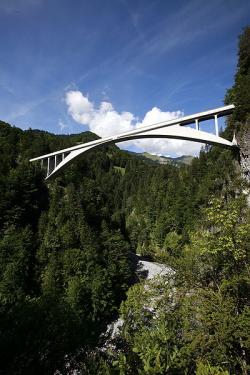
The Salginatobel Bridge, spanning the Salgina Valley ravine, is the earliest surviving three-hinged, hollow box arch bridge designed by Robert Maillart.
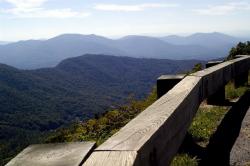
Designed to connect the Shenandoah National Park in Virginia and the Great Smokey Mountains National Park in North Carolina, the Blue Ridge Parkway was planned to provide pleasant motoring and to conserve and interpret the unique natural and cultural resources of the Southern Highlands. It was conceived also as a public works project to relieve unemployment in the Appalachian region during the Great Depression.
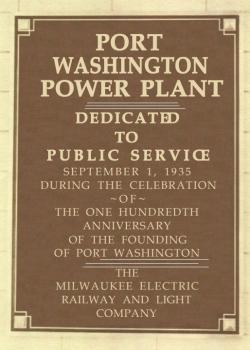
The Port Washington Power Plant of the Wisconsin Electric Company was the most thermally efficient steam power plant in the world for many years following its opening in 1935. Its design reflected the cumulative experience of the utility's engineers in burning pulverized coal at the Oneida Street Plant and the Lakeside Station in Milwaukee.

In the late 1920s, the automobile cut railroad passenger service by more than half. The debut of the Pioneer Zephyr heralded a comeback in 1934, touring the country and being seen by some two million people in 222 cities.

Norris Dam impounds the Clinch River, a mountain tributary of the Tennessee River. The facility stands as a tribute and symbol of the birth of the Tennessee Valley Authority (TVA). Given broad jurisdiction over resource development in the watershed (a 40,000-square-mile basin comprising parts of Virginia, North Carolina, Georgia, Alabama, Mississippi, Kentucky, and Tennessee), the TVA was formed to plan for flood control, improve navigation, and produce hydroelectric power.

Established in 1939 by the National Advisory Committee for Aeronautics (NACA), and named after NACA’s first chairman, Joseph S. Ames, the center has been at the forefront of American, and worldwide, aeronautics research.
Innovations
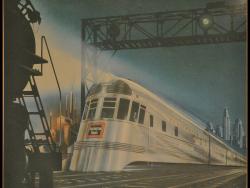
In the late 1920s, the automobile cut railroad passenger service by more than half. The debut of the Pioneer Zephyr heralded a comeback in 1934, touring the country and being seen by some two million people in 222 cities.
The Zephyr was the first diesel-powered, stainless-steel…
Read More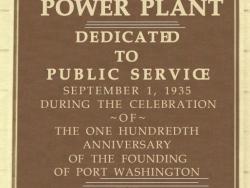
The Port Washington Power Plant of the Wisconsin Electric Company was the most thermally efficient steam power plant in the world for many years following its opening in 1935. Its design reflected the cumulative experience of the utility's engineers in burning pulverized coal at the Oneida…
Read More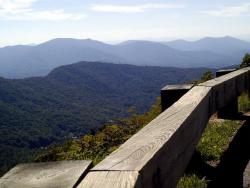
Designed to connect the Shenandoah National Park in Virginia and the Great Smokey Mountains National Park in North Carolina, the Blue Ridge Parkway was planned to provide pleasant motoring and to conserve and interpret the unique natural and cultural resources of the Southern Highlands. It was…
Read More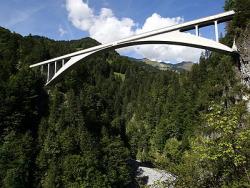
The Salginatobel Bridge, spanning the Salgina Valley ravine, is the earliest surviving three-hinged, hollow box arch bridge designed by Robert Maillart.
Maillart's 1901 invention of the concrete hollow box design became a major bridge building concept. In this design, the concrete arch…
Read More

The San Jacinto Monument commemorates the decisive 1836 battle near the banks of the Buffalo Bayou and the San Jacinto River that allowed Texas to win independence from Mexico. It is the world's tallest monument, rising 15 feet higher than the Washington Monument.
In 1936, Daughters and…
Read More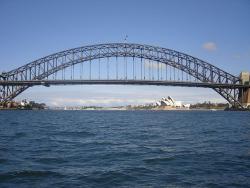
The design of the Sydney Harbour Bridge closely resembles the Hell Gate Bridge over the East River in New York City, conceived in 1916 by noted engineer Gustav Lindenthal and his chief assistant, O.H. Ammann.
The Sydney Harbour Bridge, with a span of 1,650 feet, is not only the longest…
Read More
The Triborough Bridge Project is a three-branched waterway crossing that connects Manhattan, the Bronx, and Queens at a junction of the East River and the Harlem River in New York City. The complex structure includes a suspension bridge from Wards Island to Queens, a vertical lift span from…
Read More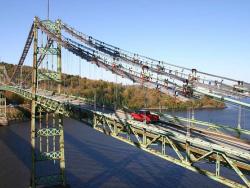
Designed by David B. Steinman, of Robinson & Steinman, New York City, the Waldo-Hancock suspension Bridge is a significant example of Steinman's work. David Steinman is considered among the most important suspension bridge designers of the 20th century. He earned an engineering degree from…
Read More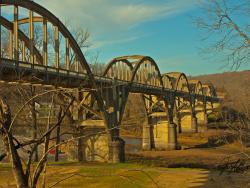
When this 1,850-foot concrete-arch highway bridge was built on the White River in a remote region of northern Arkansas - prior to the construction of upriver, flood-control dams - flash floods occurred frequently, sometimes causing the water to rise as much as one foot per hour. Construction…
Read More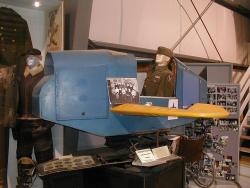
During the 1920s, Edwin A. Link was employed in his father's organ building and repair business. He obtained his pilot's license in 1927 and became convinced that a mechanical device could be built as an inexpensive method to teach basic piloting. Link received three patents on his flight…
Read More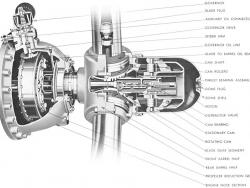
Rapid development of aircraft design in the 1930s required many related innovations, including propeller design. The hydromatic propeller by Hamilton Standard marked a significant advance over the counterweight-type, controllable pitch propeller. The first test flight of the prototype took place…
Read More
Prior to its merger with the Carnegie Institute of Technology in 1967 to form Carnegie Mellon University, the nonprofit Mellon Institute for Industrial Research was a major, independent research corporation dedicated to promoting applied research for industry and educating scientific researchers…
Read More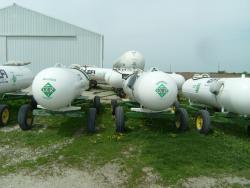
In 1932, J. O. Smith, Agricultural Engineer at Delta Branch Experiment Station in Stoneville, MS, attached a small anhydrous ammonia cylinder to a plow in such a manner that the NH3 was released in the soil. The plow, a Georgia Stock, was pulled by a gray mule named Ike. This was the…
Read More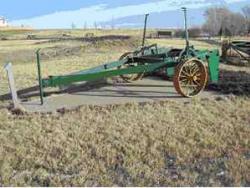
In the 1930's thousands of acres of land were rendered unproductive through wind erosion because of drought, tillage, and dust mulch farming practices. Charles S. Noble, of Nobleford, Alberta, invented a cultivator that sheared stubble and weeds below the ground surface, leaving residue on…
Read More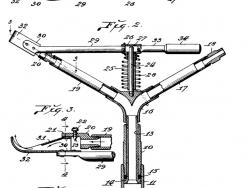
The Rain Bird horizontal action impact drive sprinkler head was invented in 1933 by Orton Englehardt, a citrus grower and native of Glendora. The design offered slow rotation and uniform watering, benefits long sought by local irrigators. Clement M. LaFetra, a friend of Englehardt, urged…
Read More


